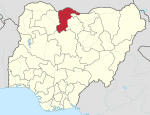Govt Contributing To Worsening Food Inflation, Says Cardoso


The Governor of the Central Bank of Nigeria, Olayemi Cardoso, has blamed the government for contributing to the galloping food inflation in the country.
Cardoso noted that the huge purchase of foodstuffs by the government as palliatives is contributing to inflation.
He made this known in his contribution to the March Monetary Policy Committee, which was published on the website of the CBN.
The MPC had increased the benchmark interest rate to 24.75 percent, from 22.75 percent, saying that its hawkish stance was to tackle inflation.
READ: Customers Panic As CBN Bans Moniepoint, Opay, Kuda, Others
However, in March, the country’s inflation rate accelerated to 33.2 percent, with the food inflation rate reaching 40.01 percent, a year-on-year increase of 15.56 percentage points from 24.45 percent in March 2023.
The surge in food inflation, according to the National Bureau of Statistics, could be attributed to rising prpercent items such as garri, millet, yam tuber, water yam, and others.
Cardoso, in his comments, noted that inflationary pressure had failed to abate despite the hike in the interest rate in February.
He said, “Despite notable stability in the foreign exchange market resulting from decisions taken at that 293rd MPC meeting, inflationary pressure remains unabated. While there is the argument that the significant tightening since the last MPC meeting is yet to fully permeate the system and yield its expected impact, the risk of galloping inflation persists.
“If such a hyperinflationary scenario is to become reality, available options to control inflation could be severely constrained. From the facts presented to the MPC, there is a clear indication that the monetary factors contributing to inflation are diminishing in their significance.
“This could be considered as evidence of the impact of decisions reached at the 293rd MPC meeting. Staff reports show that the principal drivers of acceleration in inflation are hikes in food and energy prices which are associated with structural factors. Further, new dimensions of inflationary pressure are emerging.
“First, ‘seller inflation’ arising from the oligopolistic structure of commodity markets, as noticed in the prices of local commodities, is gaining significance. In addition, huge purchases by the government for distribution as palliatives to vulnerable citizenry is adding another dimension to the food price inflation, with seasonal factors of food price increases during religious fasting and festive periods, adding price cyclicality.”
He further said that the new sources of inflation were better addressed by the fiscal authorities to complement the efforts of monetary policy.


Kazeem Badmus is a graduate of Mass Communication with years of experience. A professional in journalism and media writing, Kazeem prioritses accuracy and factual reportage of issues. He is also a dexterous finder of the truth with conscious delivery of unbiased and development oriented stories.








